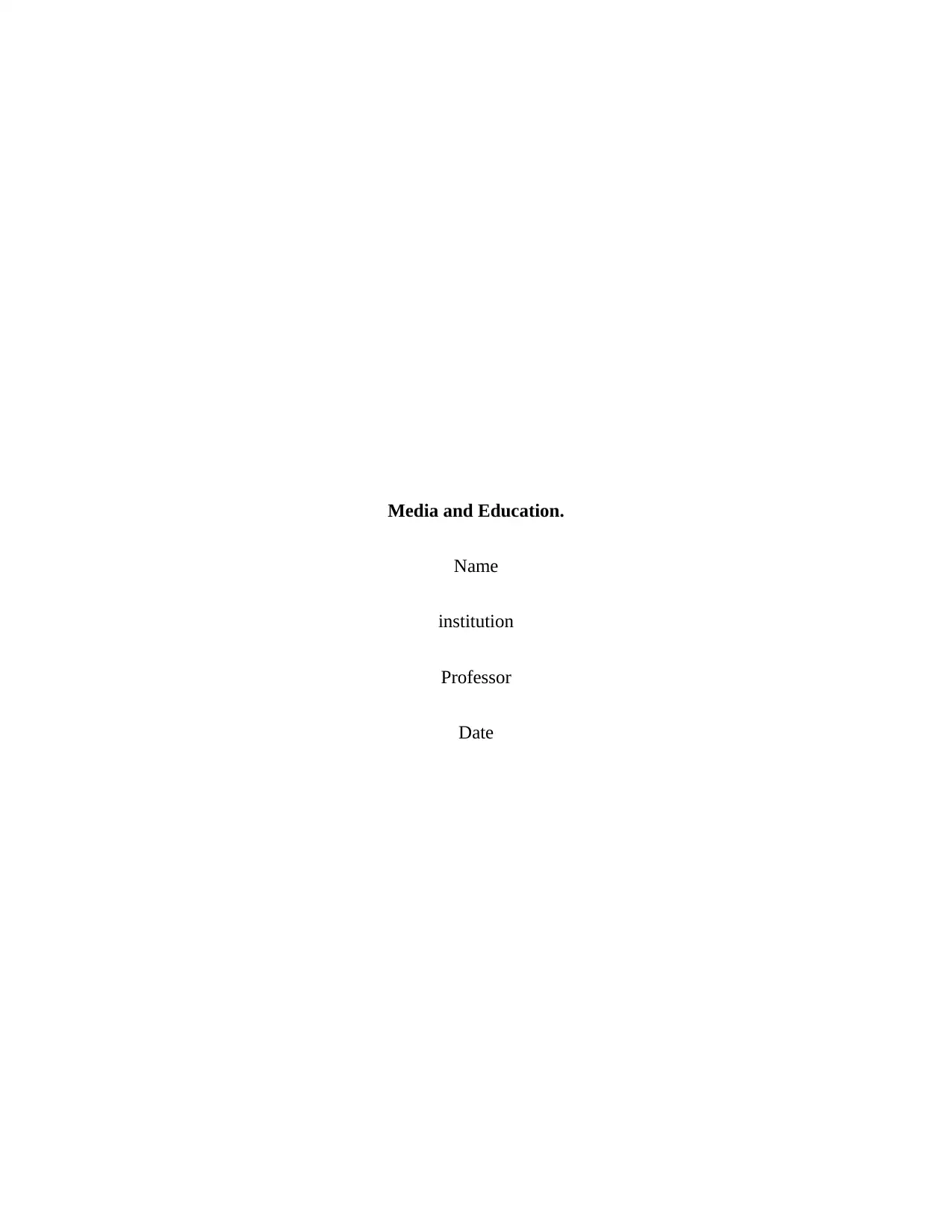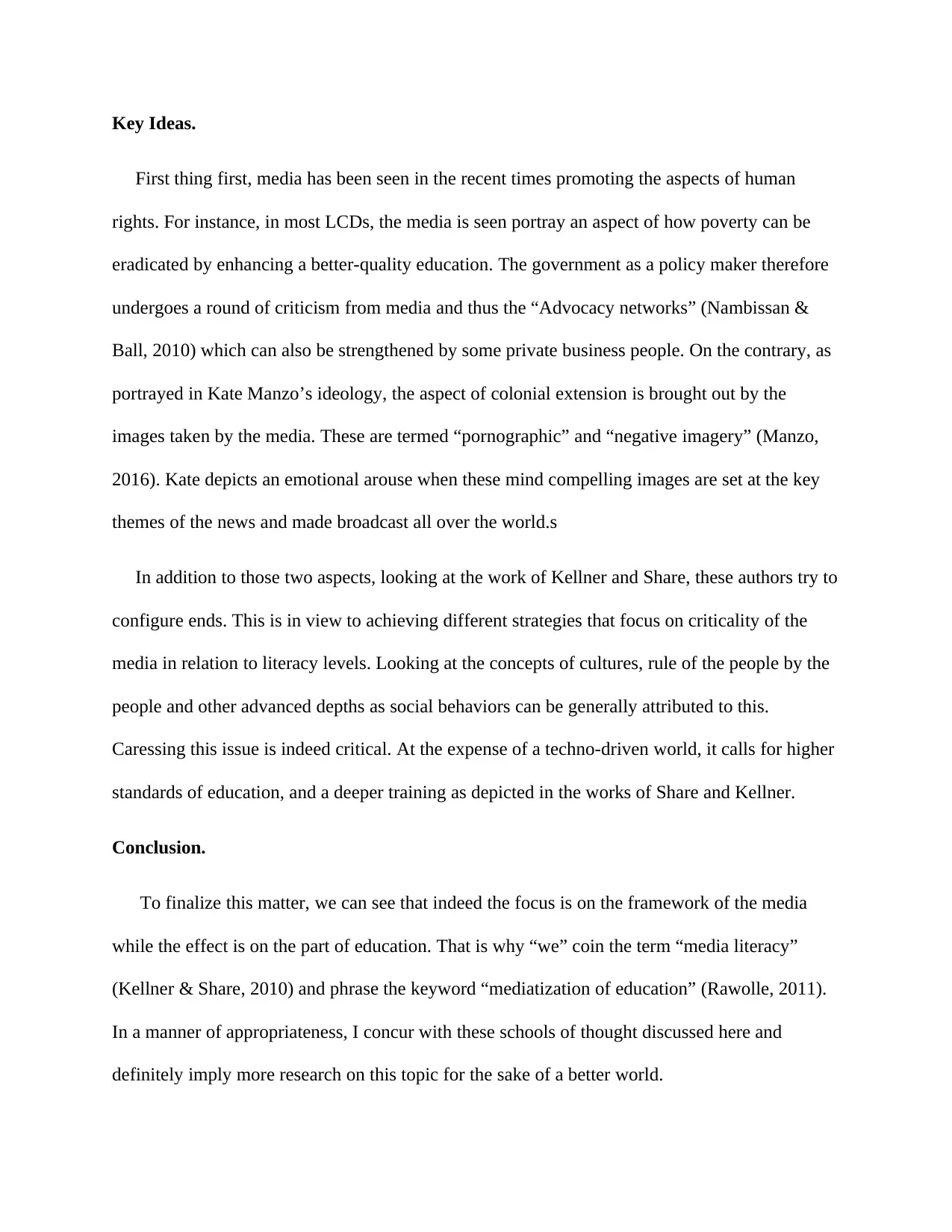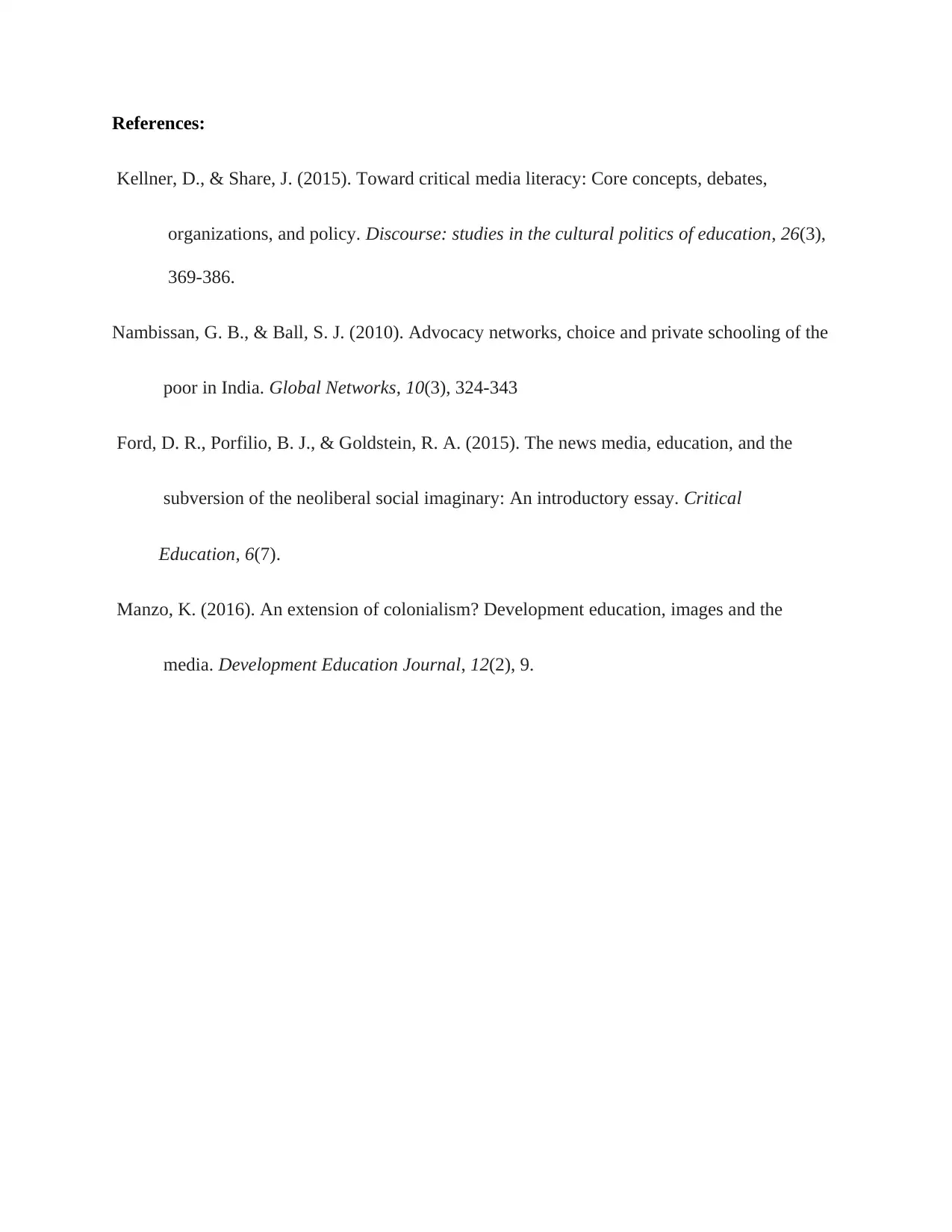The Impact of Media on Education: A Critical Review of Key Concepts
VerifiedAdded on 2023/03/21
|4
|843
|99
Essay
AI Summary
This essay delves into the intricate relationship between media and education, examining key concepts such as media literacy and the mediatization of education. It references scholarly works that explore various aspects of this relationship, from the promotion of human rights and the critique of government policies by the media to the negative imagery and colonial extensions portrayed in media representations. The essay also touches upon the importance of critical media literacy in a techno-driven world, advocating for higher standards of education and deeper training. The conclusion emphasizes the focus on the framework of media and its effect on education, supporting further research to enhance understanding and promote a better world. Desklib provides access to similar essays and resources for students.
1 out of 4





![[object Object]](/_next/static/media/star-bottom.7253800d.svg)